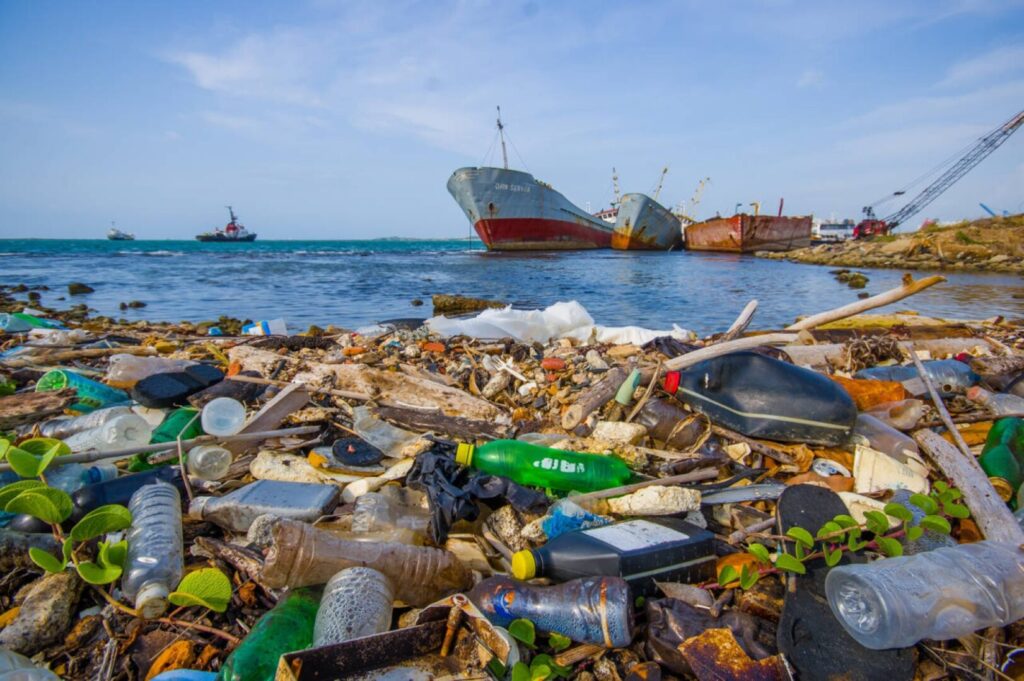The world generated approximately 400 million tons of plastic waste in 2024, a figure that illustrates the magnitude of one of the world's most important environmental crises of the 21st century. From disposable bottles to polyester T-shirts and PVC pipes, the most serious plastic products invade every corner of the planet. What's worse, only 9% of these materials are actually recycled.
The plastic pollution is present in rivers, oceans, agricultural fields, cities and even in the most remote places, such as the Mariana Trench or the summit of Mount Everest. This phenomenon not only threatens the biodiversitybut also represents a risk for the human health and aggravates the climate changea report published by UN Environment.
"Plastic pollution is one of the most serious environmental threats facing the Earth, but it is a problem we can solve," said Elisa Tonda, head of the United Nations Environment Programme's (UNEP) Division of Resources and Markets. "Doing so could not only improve the well-being of people and the planet, but also open up a range of economic opportunities."
Microplastics in the human body and emissions on the rise
Recent studies have detected microplastics in human organs, including the liver, lungs and even breast milk. One liter of bottled water contains, on average, 240,000 plastic particles, the health effects of which are still under investigation.
This is in addition to the climate footprint of plastic. Its highly energy-intensive production was responsible for more than 3% of global emissions of greenhouse gases. greenhouse gases by 2020. And if urgent action is not taken, by 2060 plastic waste could triple, reaching one billion tons per year, according to the OECD.
Recycling is not enough, a redesign of the system is urgently needed
The recyclingWhile necessary, it is not enough to stop this emergency. Many plastics are not designed to be reused, and current systems cannot keep pace with the exponential growth in their production.
Experts therefore propose an approach based on the life cycle of plastic products: redesign from the source to reduce toxicity, extend their use, facilitate their recycling and, where possible, replace them by sustainable materials. This includes limiting the use of single-use plastics, such as bottles, cutlery and disposable containers, which account for a large part of the problem.
International treaty, key to global change
The global dimension of the plastic pollution requires a coordinated response. That is why more than 170 countries are negotiating a legally binding international agreement to end this crisis. The next round of negotiations will take place from August 5-14, 2025 in Geneva, Switzerland.
This treaty seeks to curb the uncontrolled production of plastics, hold manufacturers accountable for the full cycle of their products and create conditions for a more circular economy.
Solutions already in place
Despite the bleak outlook, there are signs of hope. Governments, businesses and communities are adopting innovative solutions: bans on disposable products, advanced recycling technologies, packaging redesign and development of alternative materials.
The UN estimates that by adopting large-scale measures based on the life-cycle approach, the world could save up to $4.5 trillion in social and environmental costs by 2040.
This year, the World Environment Day focuses on combating plastic pollution. And not coincidentally, the time to act is now. Without real commitments, the cost to future generations will be incalculable.
The world is at a crossroads. The question is no longer whether we can stop the plastic crisis, but whether we are willing to transform our production and consumption systems to do so.
Source: UN Environment


